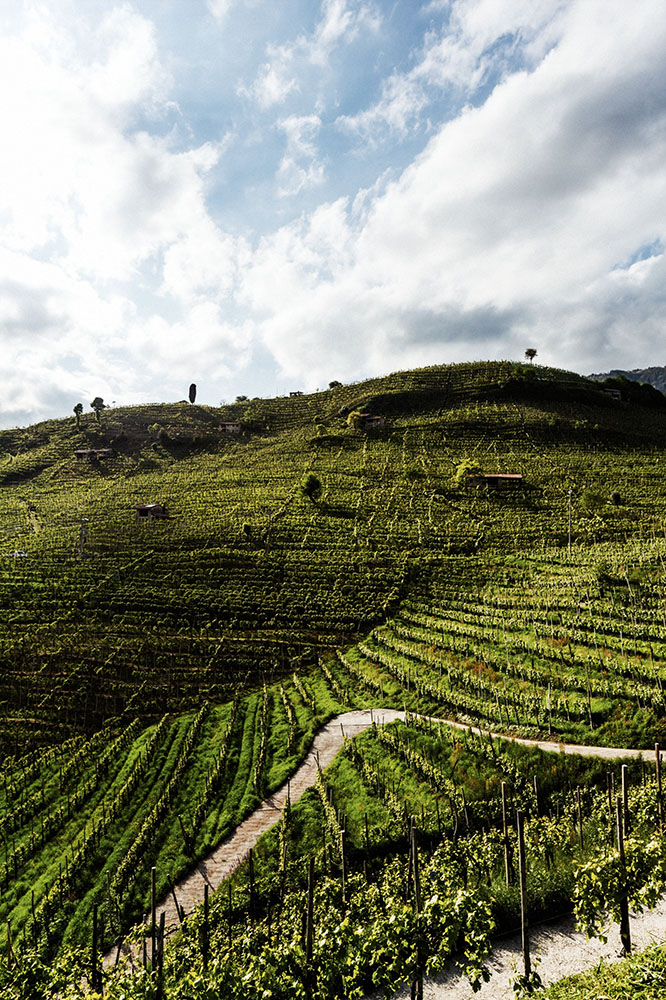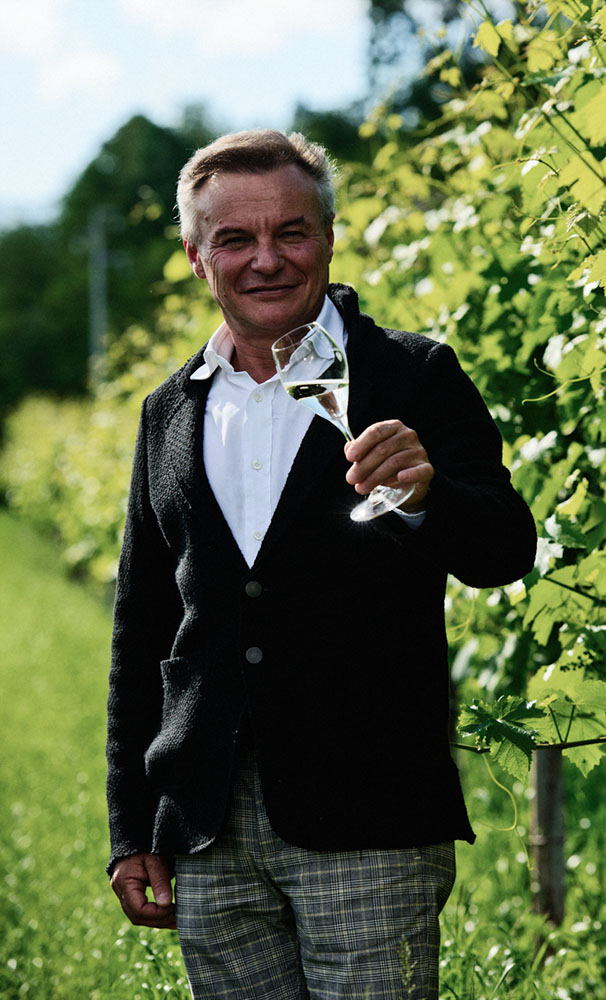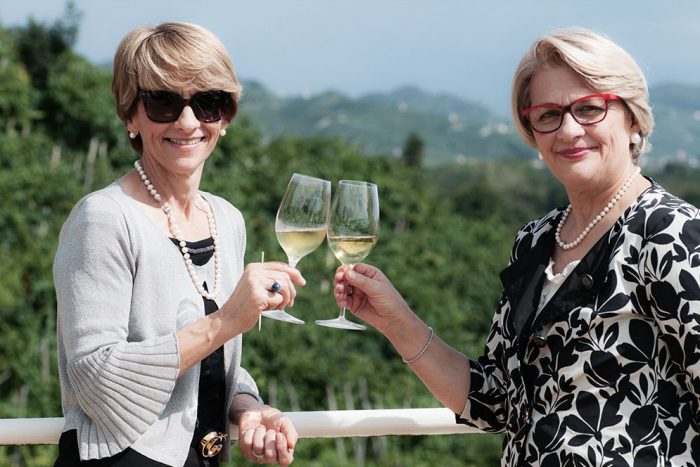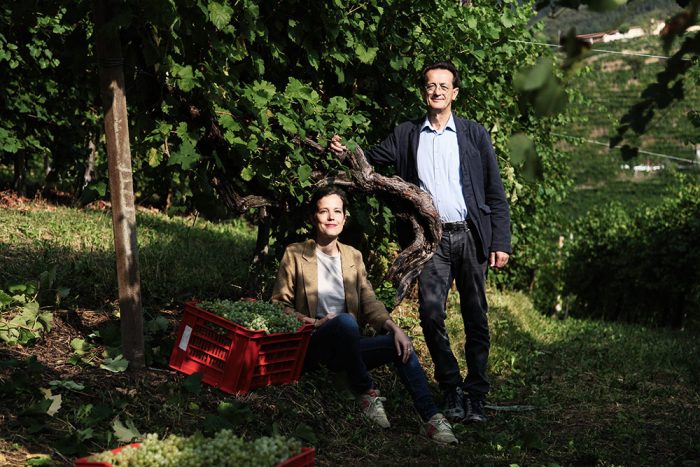
This is a story about Prosecco. No, not the generic stuff that has taken the world by storm in the past five years. (You know, the stuff that finds its way into the Euro-fashionable Aperol Spritz and Sunday-morning Mimosas.) This is a story about the original Prosecco, the one from the hills, the one that was there before massive expansion into the flat lands of Veneto and Friuli-Venezia-Giulia, where the vines tend to be over-cropped to the high heavens.
The bubbly that I am referencing is Prosecco Conegliano Valdobbiadene Superiore.
Located 50 kilometres north of Venice and 100 kilometres from the Dolomites, Prosecco Conegliano Valdobbiadene (a.k.a., PCV) was the original Denominazione di Origine Controllata (DOC) area, representing over 8,000 hectares of premium south-facing hillside vineyards. Basic Prosecco was always the lower IGT classification but that all changed in 2009. PCV, after years of lobbying to protect its quality and terroir, was promoted to the highest level of Italian wine classification, Denominazione di Origine Controllata e Garantita (DOCG), and its name was changed to Conegliano Valdobbiadene Prosecco Superiore. Of course, politics came into play and trade-offs were required. The Prosecco IGT producers agreed to the promotion, as long as they received their own DOC. All agreed, and essentially, overnight, legitimacy was given to the illegitimate. A bad move in my opinion, as the producers of PCV, already facing fierce global sparkling-wine competition, enhanced their little brother’s perception.
Put in other terms, PCVS DOCG produces only 25 percent of what is labelled Prosecco!
Glera
As part of the aforementioned changes, the grape Prosecco also became known as Glera, making any reference to the wine known as Prosecco appellation-based rather than varietal-named. Why Glera? Well, it is the original name of the grape. First introduced to the region back in the 18th century, it became the go-to varietal post-phylloxera. Prior to this, the dominant grape was Verdiso, which translates as “green.” This fickle grape is late-ripening, never turns yellow during veraison, has a stern personality and is susceptible to rot. It is easy to see why the vignerons of that epoch were won over by the charming qualities of the easy-to-grow Glera.
It is a quasi-aromatic varietal known for its elegance and refreshing personality. Banana, pineapple, green apple, pear, white flowers and mineral are some of the flavours associated with the grape. By law, Glera must make up 85 percent of the blend, with most producers opting to use 100 percent.
Styles and Trends
Most Prosecco must be made via the Metodo Italiano, also known as the Charmat or Tank Method. Contrary to popular opinion, it was Signor Martinotti, an Italian, and not Monsieur Eugene Charmat of France, who first created this process. This production method helps to emphasize the freshness, purity and delicacy of the Glera grape, rather than the yeasty/toasty aromas associated with the Champagne method. It also helps in expediting the product to the marketplace. For instance, the 2017 vintage has just been released.
Classic Prosecco is Extra Dry, meaning that when the dosage is added, the final product contains 12 to 17g/l of sugar. Today, Brut versions are on the rise, which have very little or no dosage. In my opinion, this is the path to the future.
Brut versions are on the rise… In my opinion, this is the path to the future
The Hamlets, Cru and Others
A recent addition to the PCVS hierarchy is the Rive concept, encompassing 43 specific single vineyards in particular villages or hamlets with a long history of quality production and steep slopes. (Rive means “vineyards planted on steep land.”) Not surprisingly, all grapes must be hand-harvested due to the terrain.
The pinnacle of Prosecco is Cartizze (a.k.a., Valdobbiadene Superiore de Cartizze). This 107-hectare Cru of Prosecco has the steepest slopes and is situated solely within the boundaries of the village of Valdobbiadene. As legend has it, these grapes were always the last to be harvested due to the difficulty involved in picking them manually off such steep grades. This extended hang time, combined with maximum sun exposure, helps produce the ripest Glera grapes and, in turn, the wines with the most depth and complexity.
Other Wines
Located across the Piave river from PCVS is Asolo Prosecco Superiore DOCG, a smaller hillside region that makes wines of comparable quality to its bigger neighbour. My personal discovery was the dry white (non-Glera), red and passito wines. Labelled under the Colli di Conegliano DOCG, they represent less than 1 percent of the entire production of the region. Most of us will never cross paths with these wines, but if the chance arises, please do take advantage.
The Prosecco we are starting to see enter the Canadian market is primarily from the 2017 vintage. It will be remembered as a year of ups and downs. The combination of spring hail and intense summer heat produced lower yields — 130,000 tons less than the previous year. The uptick is quality, as the aforementioned factors have helped to enhance the floral and fruity qualities of the wines, which is the hallmark of the vintage.

Prosecco Notes
Ruggeri Giustino B. 2016 ($30)
Ruggieri is playing at a level above most other Prosecco producers and a recent vertical tasting while in Prosecco confirmed it. This Gambero Rosso Tre Bicchieri winner features peach, apple, nectarine, apple, banana, powdered candy and honey. Off-dry, it is concentrated with fabulous length. Get to know this producer and thank me later!
Villa Sandi Brut 2017 ($20)
This stalwart of the Canadian market always turns in a top offering. The 2017 is all about the honey, pear, apple, banana and citrus. Lingers long and crisp acidity supports everything.
Gemin Brut 2017 ($20)
Dry, this is full-bodied Prosecco impresses with layers of citrus, pear, apple and, interestingly enough, lime cordial. Excellent length and well suited to oysters on the half shell.
Sorelle Bronca Brut 2017 ($25)
A lovely discovery while visiting Prosecco. This winery makes both top-end sparkling as well as impressive dry red and white still wines. Lots of peach, honey, apple and floral elements. Great concentration and length.
Adami Asciutto Vigneto Giardino Rive di Colbertaldo 2017 ($25)
From one of the region’s stars comes this bubbly with a banana-driven personality that is accented by pear, apple and mineral. Lovely acidity and excellent length.
Mani Sagge Brut Rive di Manzana 2017 ($20)
Mani Sagge is a new/old winery. The owners have recently restarted the operation that their grandparents created, but which was abandoned by their parents in favour of non-agricultural careers. All said, they produce an impressive array of sparkling wines. This Prosecco features nectarine, pear, apple, banana, honey and anise. Long finale. A winery to discover!
Val d’Oca Brut 2017 ($20)
Most patrons of the LCBO will recognize this stalwart bubbly, and the 2017 vintage is top-notch stuff. Pear, apple, white flowers and lemon are built on a tangy personality. Great length and ready to drink.
Fratelli Bortolin Brut Zan Senza Solfiti 2017 ($20)
For lovers of natural/organic wines, this wine falls right into your wheelhouse. Starts off with a bouquet of apple, floral, citrus and herbal elements, which then turns slightly nutty with a slight bruised/sweet apple and honey undercurrent on the palate. Singular and not unpleasant!
La Farra Extra Dry Rive di Soligo 2017 ($25)
Aromas of peach, honey, citrus, pear and lemon and white flowers meet up with caramelized apple and mineral notes on the palate. Fresh acidity and superb aftertaste.
Bisol Brut Crede 2017 ($25)
Bisol is one of my favourite producers. Delicate and subdued, this wine is linear with flavours leaning to the tree and stone fruit paradigm. Very good length.
Drusian Dosaggio Zero 30 Raccolti 2017 ($20)
Bone dry, this wine features moderate peach, banana, floral, honey and citrus aromas. It is the banana and citrus that carry the finale. Try with a Parmesan and sweet pea risotto.
Astoria Extra Dry 2017 ($20)
A slight yeasty edge weaves its way through peach, floral, honey, citrus and apple. The sweetness makes it a perfect foil for spicy tacos or ceviche.
Santa Margherita Brut Rive di Refrontolo 2017 ($25)
From the famed producer of Pinot Grigio comes this quality Rive Prosecco. Apple, floral, citrus and pear come together on the nose and palate. Lingers with mineral notes chiming in at the end.


